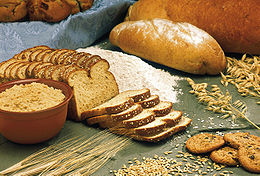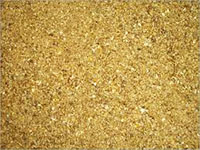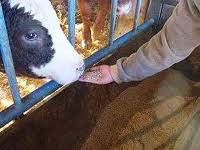| |
Food

Barley contains eight essential amino acids. According to a recent study, eating whole-grain barley can regulate blood sugar (i.e. reduce blood glucose response to a meal) for up to 10 hours after consumption compared to white or even whole-grain wheat, which have similar glycemic indices. The effect was attributed to colonic fermentation of indigestible carbohydrates.
Hulled barley (or covered barley) is eaten after removing the inedible, fibrous, outer hull. Once removed, it is called dehulled barley (or pot barley or scotch barley). Considered a whole grain, dehulled barley still has its bran and germ, making it a nutritious and popular health food. Pearl Barley (or pearled barley) is dehulled barley which has been steam processed further to remove the bran. It may be polished, a process known as "pearling". Dehulled or pearl barley may be processed into a variety of barley products, including flour, flakes similar to oatmeal, and grits.
Animal feed
 
Half of the United States' barley production is used as livestock feed. Barley is an important feed grain in many areas of the world not typically suited for maize production, especially in northern climates - for example, northern and Eastern Europe. Barley is the principal feed grain in Canada, Europe, and in the northern United States. A finishing diet of barley is one of the defining characteristics of western Canadian beef used in marketing campaigns.
|